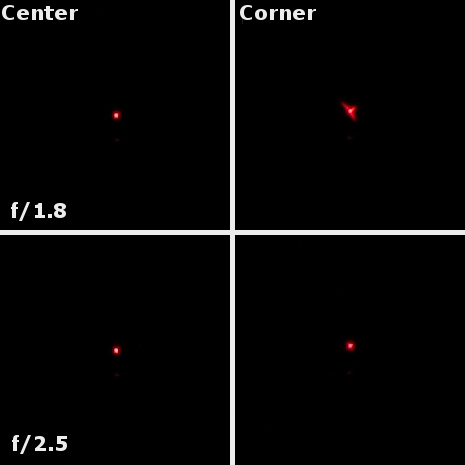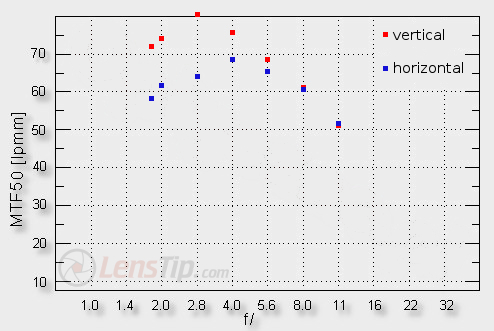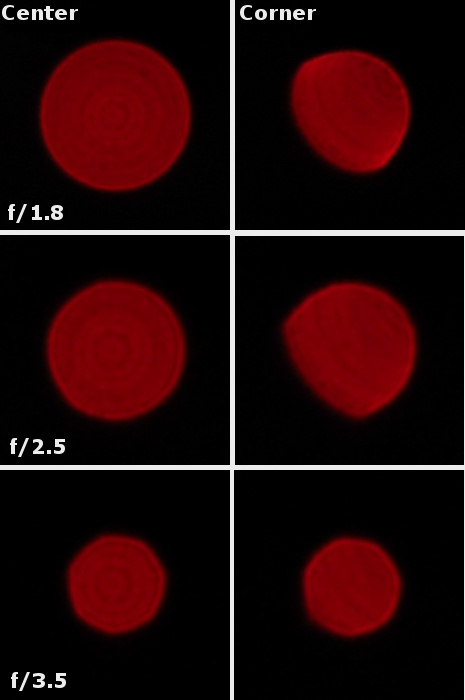Olympus M.Zuiko Digital 25 mm f/1.8
7. Coma, astigmatism and bokeh

Please Support UsIf you enjoy our reviews and articles, and you want us to continue our work please, support our website by donating through PayPal. The funds are going to be used for paying our editorial team, renting servers, and equipping our testing studio; only that way we will be able to continue providing you interesting content for free. |
- - - - - - - - - - - - - - - - - - - - - - - - - - - - - - - - - - - - - - - - - - - - - - - -
Still the astigmatism remains the biggest problem of the tested lens; it is also the main reason why the Olympus cannot break any resolution records. Please, check the difference between vertical and horizontal MTFs for one of our testing charts.

By f/1.8- 2.8 the average difference between vertical and horizontal MTF function values exceeds a high level of 20%. Only by f/4.0 the astigmatism decreases to a moderate level of 9% and by f/5.6 it drops further to a low value of 5%.
The appearance of defocused images is beyond reproach. Out of focus light points still feature a bit of concentric rings but their intensity is low and the rings themselves come without any distinct rims on the edge.







